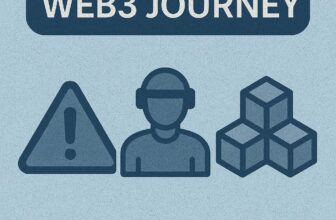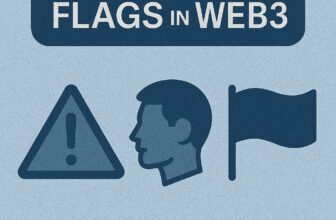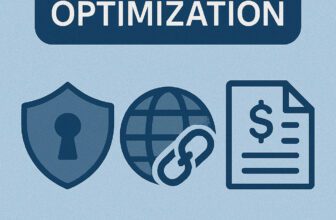-
Level
Intermediate–Advanced
-
Duration
50–60 minutes
-
Lesson
5 of 7
-
Course
Security & Safety
-
Status
✅ Completed
📘 Lesson 5: DAO & Governance Exploits
Intro:
As decentralized organizations become the backbone of DeFi and Web3 ecosystems, the mechanisms of DAO governance are being tested in real time. But decentralization doesn’t guarantee immunity from exploitation — in fact, governance itself can be weaponized. This lesson uncovers how DAOs are vulnerable, what attack vectors exist, and how to design safer systems.
🔍 Overview
This lesson explores the core architecture of DAOs, how on-chain voting works, and the security blind spots that allow for hostile takeovers, vote manipulation, and treasury draining. It covers both historical examples and evolving attack methods in token-based governance models.
📋 What You’ll Need to Know
1. Prerequisites:
- Basic understanding of smart contracts and DAOs
- Familiarity with token-based voting mechanisms
- Previous lessons on smart contract risk and architecture
2. Target Audience:
- Web3 founders & DAO contributors
- Governance designers & protocol architects
- DeFi investors & analysts
- Auditors and risk managers
📚 Lesson Content
DAO governance introduces powerful but dangerous control structures over DeFi protocols. By understanding the technical and social vectors of governance exploits — including flash loan attacks, bribery, and delegate capture — builders and stakeholders can design more resilient decentralized systems.
✍️ Content
What Are DAOs and How Do They Govern?
A Decentralized Autonomous Organization (DAO) is a self-governing structure where decision-making occurs through community consensus, typically via token-weighted voting. Smart contracts execute rules automatically, controlling treasuries, parameter changes, and ecosystem strategies. However, decentralization does not remove the need for security — it reshapes it.
Governance Tokens: Power Tools with Side Effects
Governance tokens grant voting rights, but also create a market for control. If an entity accumulates enough tokens, it can influence or even dictate proposals — such as redirecting funds, changing contract parameters, or modifying the DAO’s scope. Token price volatility and liquidity enable attackers to gain short-term control using flash loans or market manipulation.
Flash Loan Attacks and Vote Hijacking
One of the most prominent forms of DAO exploitation involves flash loans. These allow actors to temporarily borrow vast amounts of governance tokens to influence voting outcomes. For instance, the 2020 bZx governance attack used this method to pass a malicious proposal that drained the protocol treasury. While the tokens are only held for a few seconds, they can be enough to alter governance during a snapshot.
Bribery and Delegation Exploits
Delegation enables voters to assign their power to others, but this opens doors to bribery and “dark DAOs.” Attackers can pay users to delegate to addresses under their control, building up power without detection. This leads to vote buying and cartelization, undermining the concept of decentralized consensus.
Vulnerable Proposal Mechanics
Insecure proposal logic, such as unchecked contract calls or poor quorum thresholds, enables code injection or “governance bombs.” A notable case is the Beanstalk DAO exploit, where a malicious proposal executed arbitrary code after the attacker briefly acquired enough voting power via a flash loan.
Defense: Guardrails for DAO Security
Securing DAOs requires a mix of technical and social engineering. Time locks, circuit breakers, dynamic quorum rules, and multisig approvals can limit damage from sudden proposals. Encouraging participation, limiting delegation centralization, and implementing proposal reviews also improve resilience. Projects like Compound and Aave use layered governance models that include pause guardians and security councils.
✨ Key Elements
- Token-based voting and its vulnerabilities
- Flash loans as a tool for vote hijacking
- Delegation mechanics and bribery risk
- Real-world DAO exploit case studies
- Defense mechanisms for DAO architecture
🔗 Related Terms:
DAO governance, vote manipulation, flash loans, governance tokens, vote delegation, quorum rules, on-chain voting, DAO treasury attacks, smart contract governance
📌 Conclusion
DAO governance enables decentralized control — but it also introduces new layers of risk. From flash loan-fueled vote hijacks to bribery attacks and proposal logic flaws, governance is now a security vector. As DAOs scale and hold larger treasuries, securing the governance process becomes just as critical as protecting the code. A well-designed DAO doesn’t just distribute power; it defends it.
Featured Courses
Capstone: Simulated Web3 Journey
Managing Risks & Red Flags in Web3
Privacy & Transaction Optimization
Using Crypto in Daily Life
NFTs & Web3 Apps in Practice
Introduction to DeFi: Lending, Staking & Yield Explained
Understanding Block Explorers in Crypto
Bridges & Multi-Chain Navigation
Swapping Tokens & Using DEXs
Insurance & Risk Mitigation Strategies
🚀 Continue Your Journey
Next, learn how crypto-native insurance and layered risk controls help users and protocols recover from exploits and build resilience.
Start Lesson 6Join the Crypto Hoopoe Community








